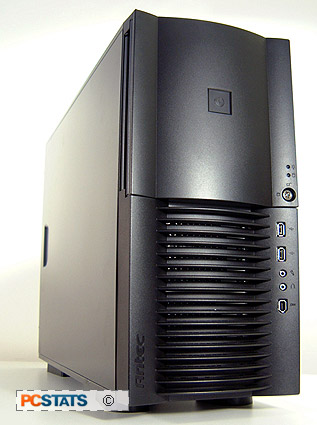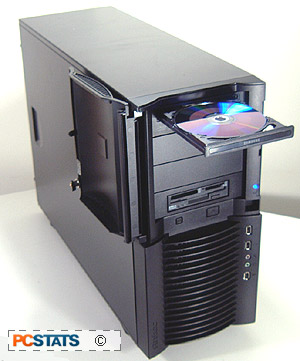The computer industry is in the
midst of a transition and the computers of tomorrow will be quite different
than what we're currently used to. With the old standby of a "die-shrink
and ramped-up clock speeds" no longer possible due to increased power
dissipation issues, processor manufacturers have turned the focus onto
other means of improving performance on each new emerging class of
CPU. The current method du jour is to pack two CPU cores onto one
physical processor silicon die. This technique allows for a smoother
ride, a nice little performance spike, and as more software is written with
SMP support, application performance will also increase
easily.
While
gamers are at the cutting edge of technology (eagerly snapping up the most expensive
videocards, CPUs and memory) it's the business and workstation world that benefits
the most from dual core processors.
In the workstation arena, dual processor or SMP
systems are common, and much of the software written for dual processor systems
is compatible (a patch here or there might be necessary) with dual core
processors. After all, the difference between two physical and two logical
processors is only slight from the software's perspective.
Processors
like AMD's
64-bit Athlon64 X2 series - dual core processors which are 32/64-bit operating system compatible
- are a prime example.
 |
|
Canada Computers
Content Creator X2 |
|
|
 |
| Includes: |
2.4GHz Athlon64 X2 4800+ CPU
2GB PC3200 DDR
500GB SATA HDD
(2) SLI Geforce 6800's
400W Powersupply
WindowsXP Pro OS
Sticker: $3400 CDN |
| | |
The
introduction of this series of CPUs by AMD has signaled a new shift in desktop
computing that quickly saw rival Intel follow suit with its own class of dual
core CPUs. However, major PC brands seem to be stuck in the past when it comes
to selecting the processors for PC systems destined to find their way into
endless corporate cubical farms. AMD is all but shut out of the game by Dell,
Gateway and IBM.
 This brings up a good question; exactly how well
does an AMD Athlon64 X2 based PC handle the workstation grade tasks of content
creation found in a typical information age office? What happens when we throw
in video editing, photo editing, flash creation, data compression, audio
encoding, and plain old multitasking!?
This brings up a good question; exactly how well
does an AMD Athlon64 X2 based PC handle the workstation grade tasks of content
creation found in a typical information age office? What happens when we throw
in video editing, photo editing, flash creation, data compression, audio
encoding, and plain old multitasking!?
For the answer to this content creating quandary, we'll be turning to Canada Computer's top of
the line AMD X2 system, the Content Creator X2 + SLI Bundle. Built around a top of the
line 2.4GHz dual core Athlon64 X2 4800+ CPU, and pre-installed with Microsoft
WindowsXP Professional, the system should have plenty of potential pixel kicking
power for anyone involved in heavy duty new media or content work.
Going into a little more detail, the Content Creator-X2 utilizes
an Asus
A8N-SLI
DLX motherboard with two Gigabyte GeForce 6800GTs setup in SLI mode (the
' Content Creator-X2 SLI Upgrade' package), 2GB of OCZ
PC3200 Platinum DDR memory, and twin Western Digital 250GB Caviar Serial ATA II
hard drives in a RAID 0 configuration (that's a massive 500GB of storage space).
As the hard drives come preset in RAID 0, PCSTATS
would highly recommend implementing a timely back up strategy.
While RAID
0 offers hard drive access performance advantages, it offers no data redundancy that anyone involved with creating content
should most certainly be concerned with. It's an oversight, but one that could
easily be corrected by changing the hard drive set up to a RAID 1 configuration
which is also supported by the Asus A8N-SLI DLX motherboard.

